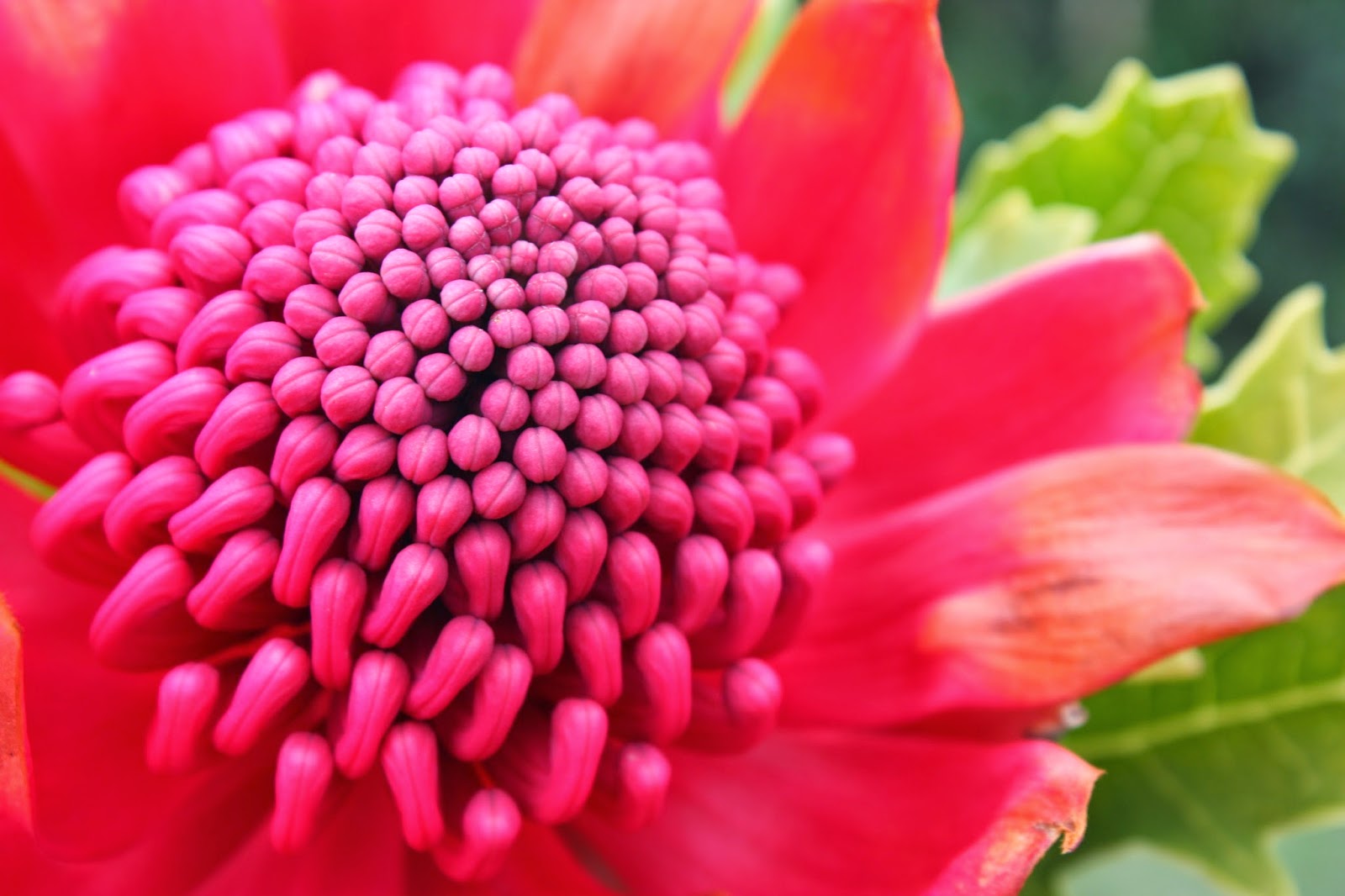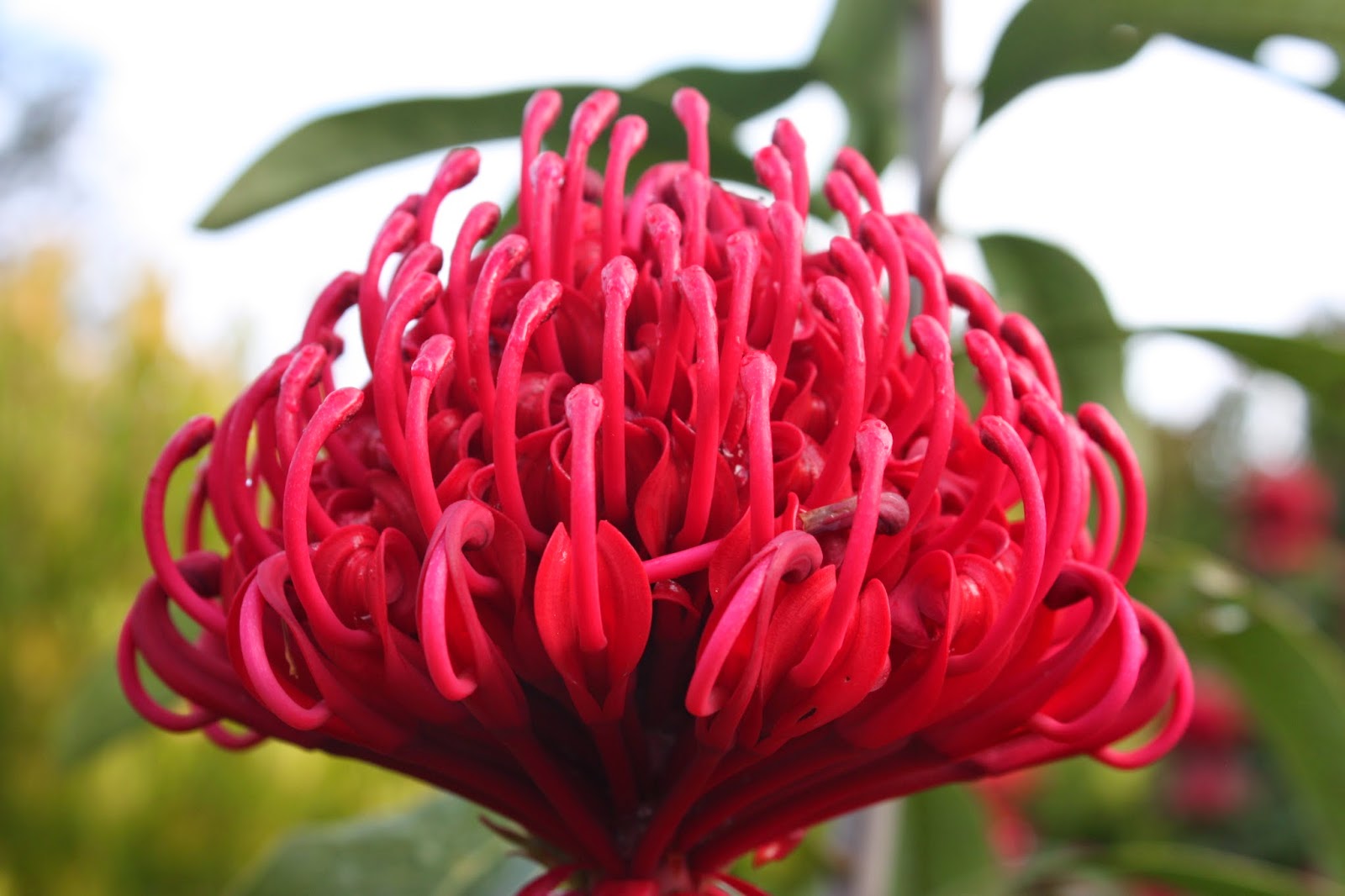Spring means Waratahs, the irrepressible native flower that's bold and impossible to ignore! Waratahs are native to Australia and are part of the proteaceae family of plants. The name Waratah is an aboriginal word meaning 'red flowering tree'. The botanical name is Telopea which means 'seen from afar'. There are a small number of Telopea species, only 5, with the biggest and most showy being Telopea Speciosissima from New South Wales. It is that states floral emblem. At Swallows Nest Farm we grow a number of types of waratahs including the Tasmanian Waratah, Telopea Truncata. First to flower are the Shady Lady - they are a rich cool red. "Shady Lady" is a hybrid form of Waratah, a cross between the T. Speciosissima and T. Oreades.
Waratah buds form at the end of long stems which grow mainly over the spring and early summer months. The buds swell over winter and in early spring, start to become a brighter red.
Usually sometime in September, the buds start to unfold to reveal the many small flowers inside that will become the centre of the waratah.
The unfolding process can take some time, and I think the flowers are really beautiful during this stage.
Once the outer bracts have unfolded, the central mass of individual flowers begin to bend and spread out, giving the waratah its well known shape.
It's best to pick as the first few styles emerge from the individual flowers. You can see in the picture above that the styles have begun to emerge on the back of this flower - facing north. At the front edge you can just see the styles beginning to poke their way through. The petal will fold as they emerge.
In the picture, almost all the styles have emerged. You can see the difference in the overall texture of the flower with the curled petals and the upright styles.
Such a gorgeous flower! I love the colour, the white styles, and the rounded shape of this flower. I hope to do some propagating, to see if I can reproduce more of them.
A close-up of the freshly emerged styles of this flower reveal the way waratahs present their pollen. On the inside tip of the white styles you can see the rich red pollen. It can be messy if the flower is handled a lot. The bees love it!
I have really enjoyed using waratahs in some weddings recently. Such a gorgeous colour!
And creating cheery arrangements is fun. Spring means there's so much to choose from to team up with that stunning rich red.
Waratahs are deservedly one of the most prized Australian native cut flowers. I love growing them!














Simply beautifull photos! Im an expat South African now living in Berlin and miss casually buying a few Proteas at the local florist. We get a few from the Protea Familystocked at some florists here, but I am sure you can imagine how expensive they are :)
ReplyDeletewww.basedinberlin.blogspot.com